The latest installment in Drive Cult's history of classic Ferraris.
With the recent launch of the new Ferrari F12 Berlinetta, it's high time for another in Drive Cult's occasional series running through the history of Ferrari's older models. The previous two instalments have focused on the 365 series and the 275 and 330 series road cars which together ran from 1963 to 1975 in one form or another. For this latest instalment we'll take a slight detour to focus on models we've not previously covered, that were introduced between 1958 and 1964. The period includes the later half of the 250 series along with a couple of other, much rarer models.
1958 was a significant year for Ferrari, as the models introduced could finally be considered production cars with standardised models and production runs running into the 100s. Prior to this Ferrari was more of a boutique car company, producing short runs of selected models with different body styles available from various Carrozzeria such as Vignale, Touring and Pininfarina.
The move to full production finalised Pininfarina as Ferrari's favoured choice of these Carrozzeria for its road cars, a relationship that lasts to this day. The other favoured Carrozzeria was that of Sergio Scaglietti, who was often tasked with building the Ferrari race cars and would later build Ferrari road cars to Pininfarina designs, utimately being absorbed into Ferrari itself.
Before I delve into the list, there is one point of housekeeping: I haven't included the Ferrari 410 Superamerica Series III in this feature, although it was launched in 1958 and is considered a distinct model from the earlier 410s. As the last of the Lampredi-engined Ferraris, it sits more comfortably in a future feature about the Long Block V12-engined Ferraris.
Ferrari 250GT 'PF' Coupe and 250 PF Cabriolet
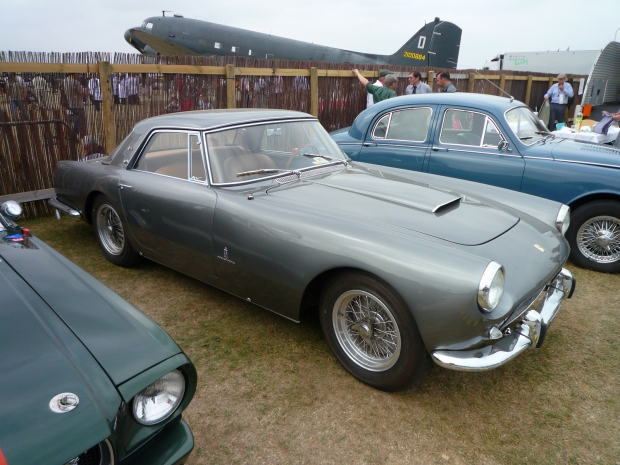
1958 saw the opening of Pininfarina's new production facility at Grugliasco in Italy. To celebrate this, a new version of the existing 250GT was introduced with a new body style that is now commonly known as the PF coupe (although it's not officially recognised as such on Ferrari's website). While perhaps not a celebrated model compared to some of the others in this feature, it is a highly significant car since its production run of 350 cars meant it was the first Ferrari to be produced in three figures with the same body style. The car itself followed very much the Ferrari convention of the time with a 2.6 metre wheelbase and powered by the 3.0 litre two-cam Colombo V12 producing around 240bhp. Performance-wise, the car was offered with a number of different rear axle ratios which resulted in quoted top speeds varying between 124 and 155mph.
Stylistically, the PF Coupe is a conventional three box coupe design which is best described as elegant rather than beautiful. This particular aesthetic was very much in vogue in Italy at the time and the theme of the shape is common to its closest rival, the Vignale-designed Maserati 3500GT and the Touring-bodied Lancia Flaminia coupes.
The Coupe was joined in 1959 by the PF cabriolet, often referred to as the Series II Cabriolet to differentiate it from an earlier short run of coach-built Pininfarina convertibles. Styling was similar to that of coupe, although Ferrari added an air scoop on the bonnet and the haunches at the rear are more pronounced on the open car. Mechanically the cars were identical, and the launch cabriolet also coincided with Ferrari standardising Dunlop disc brakes throughout the range. This YouTube video from carchannelclassic shows a 250 PF Cabriolet in flight.
The Coupe was dropped from the range in 1960, but the cabriolet continued through to 1962 with some 241 cars produced. Today a coupe is probably worth around £220,000 ($355,000). A Cabriolet - as with all open V12 Ferraris - is worth considerably more, and you can expect to pay at least double the price of the Coupe to lose the roof.
Both the Coupe and Cabriolet were Grand Tourers, ideal for cruising the Riviera but without any great sporting pretensions. That said, a few coupe's were inevitably used by privateers in race and rally events of the period. Drivers looking for more of an adrenaline rush needed to look elsewhere in the range.
Ferrari 250GT California

It was Ferrari's American importer Luigi Chinetti who noted the need in Ferrari's range for a sportier open car, in part to have a car suitable for the SCCA sports car series that were particularly popular on the west coast of the United States. Ferrari's solution was the California. In effect, this was an open version of the race specification 250GT (commonly referred to as the Tour De France), but slightly civilised for road use and turned into a roadster.
The resulting car, which was the work of Scaglietti rather than Pininfarina (although based on the earlier Pininfarina design) was an outrageous beauty, and became the darling of the Hollywood elite. Actor James Coburn owned one, whilst film director Roger Vadim owned two.
Early cars sat on the same 2.6 metre wheelbase as the PF Coupe and Cabriolet, but with a much lighter body and the option of more powerful engines producing up to 280bhp, the California was more sports car than GT. Examples were entered in both the 1959 and 1960 Le Mans 24 Hours, with a credible 5th place overall achieved in the 1959 event.
In 1961 the California received a significant update when the wheelbase was shortened to 2.4 metres. These later California's colloquially known as Short Wheelbase cars (SWB), can be identified by the airscoop being slightly recessed into the bonnet, whereas it sits proud on the earlier cars. Mechanically the SWB cars also received an updated version of the 3.0 litre V12.
Neither version of the car was produced in great numbers, with 57 of the earlier long wheelbase type and 47 of the short wheelbase type being produced by the time production ended in 1962.
Both versions are highly prized today, with the SWB version considered to be the slightly more desirable version. Examples have sold at auction for in excess of $5 million with the ex-James Coburn car currently holding third place for the most expensive car ever sold at auction, for a hammer price of over $7 million in 2009.
Ferrari 250GT Passo Corto (SWB)
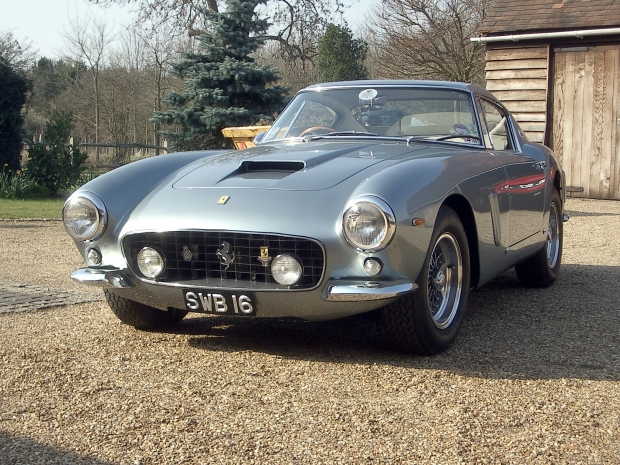
1959 saw the introduction of one of the most legendary Ferraris of all, the 250GT Passo Corto - or as it is known in the English-speaking world, the SWB. The SWB took the place of the Tour De France in Ferrari's range and came in two versions. The first was the steel-bodied car with a properly trimmed interior and bumpers and should be correctly referred to as the Lusso spec (or Luxury). The second was the stripped out Competizione version with lightweight alloy bodywork and a more powerful engine. However, there was some variation between these; some steel cars received competition engines and the other race features as well.
As you might have guessed, the SWB stands for short wheelbase and refers to the 2.4m wheelbase which would become standard on all Berlinetta Ferraris throughout the Ssixties. The shorter wheelbase vastly improved the handling, creating a car of almost perfect balance. Disc brakes were fitted all round by now, although Ferrari still used its staple of a live rear axle and leaf springs at the rear. The front suspension was a double wishbone independent arrangement.
Styling was by Pininfarina and the result is a muscular beautiful shape that in many ways set the template for all future front-engined Ferraris. Early cars have a slight notch to the top of the door frame, which was smoothed out on later cars.
The SWB would dominate GT racing in 1960 and 61, with class wins at the Le Mans 24 Hours and a victory for Stirling Moss at the 1961 Goodwood TT in a Lusso spec SWB while allegedly listening to BBC Radio 4!
All in all, 167 SWB's were made when production finished in 1962. The last of the race versions, known as SEFAC hot rods, are the most prized today. These had an even lighter alloy body and Testarossa spec race engines with up to 300bhp. Examples of these cars can reach up to $6m at auction. A regular Competizione SWB can still make up to $4m and a steel-bodied car $3m depending on its provenance.
Ferrari 400 Superamerica
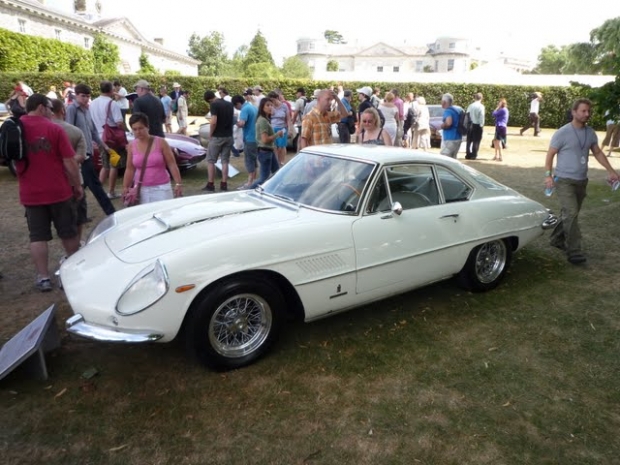
The 250s with their 3.0 litre V12s were very much the staple of the Ferrari range by 1960, but there was still a small market for an exclusive coach-built Ferrari for customers for whom money was no object. Ferrari had traditionally addressed this need with a range of cars known as the America series, powered by the Long Block Lampredi V12 engine. This powerful but temperamental engine was getting long in the tooth by the end of the Fifties and Ferrari elected to replace these with the Colombo-engined 400 Superamerica in 1960.
The 400 Superamerica (SA) would use a version of the Colombo stretched out to 4.0 litres (the original Colombo design was a mere 1.5 litres). The result was a very highly-strung engine that was a little marginal on cooling. Later 4.0 Colombo's in the 330 series would feature a revised block with wider bore spacing to improve cooling. Power was exceptional for the era with around 340bhp on tap. In a break from usual Ferrari tradition, the car's name was derived from the overall capacity of the engine rather than the capacity of one cylinder.
The first example, built for the head of Fiat, Gianni Agnelli, had an angular body with a strong influence from American cars of the day. However, the majority of 400SAs fall into two distinct body styles, both of which were by Pininfarina. Even within these two styles, there were a number of variations to suit individual customer requirements, chief amongst which was whether headlights were open or under perspex cowels.
The first of these two styles was a cabriolet style that resembled an enlarged version of the 250 California (in fact one 400SA did use a California body). It's still a beauty, as shown in the YouTube video from RM Auctions below, but perhaps not quite as pure a shape as the 3.0 litre car.
The majority of SAs were to a new coupe design. Pininfarina had been experimenting with aerodynamic shapes for a number of years and the results were borne out in what would become known as the Coupe Aerodinamico. The shape was incredibly smooth and was clearly inspired by an aircraft's wing.
Early versions of both coupe and cabriolet 400SAs sat on the same 2.4m wheelbase as the 250SWB, but in a votra face to the rest of the range, later cars (known as series 2s) reverted to the longer 2.6m wheelbase in order to increase the cabin space behind the seats. After all, this car was aimed at captains of industry and European royalty rather than racing drivers. The increase in wheelbase suited the coupe's shape nicely but the long wheelbase cabriolets do look a little out of proportion with a very long rear deck. The video below shows a 2.6m Series 2 having a pleasant cruise in the States.
Actual performance figures are hard to come by since with only 57 cars made in total across all versions, the magazines of the day could not get their hands on them to carry out performance testing. The only known independent performance figures come from Road & Track magazine who used the Aerdinamico owned by Ferrari collector William Harrah. Harrah was also something of a hot-rodder and the engine of his car was further tuned with an increased capacity of 4.6 litres and reworked internals to produce 420bhp. R&T timed this car at 179.6mph. Even without the modifications it is reasonable to assume that the 400SA was pretty much the fastest car you could buy at the time, with its only real market rival, the Maserati 5000GT, being the sole competition for that prize.
Despite this prodigious performance the 400SA was never raced at top level competition, though the engine was used in the 330TRI that would win Le Mans in 1962 and a number of other competition cars that I will come onto later.
Despite costing more than twice as much as its asking price when new and being very rare, the 400SA is not prized as the 250SWB or California. That is not to say that it's a cheap car, though - far fromt it! The best examples are likely to set the new owner back $2-3m.
Ferrari 250GTE

The 1960 250GTE was a significant car in Ferrari's history as it would be the first production Ferrari to feature 2+2 seating. Sitting on the same 2.6m wheelbase as the outgoing PF Coupe, the engine was moved further forward in the chassis and the overall size of the body increased to allow for the increased passenger capacity. The engine was the usual 3.0 litre V12 used in the other 250s of the era.
The resulting body is neat but unlikely to get the pulse racing. The bigger heavier body blunted the car's performance, too, with a top speed in the region of 130mph when an overdrive was fitted to the four speed gearbox.
The 250GTE was a huge sales success by Ferrari standards of the time, with some 950 cars being made before production ceased in 1963 to make way for the 330GT 2+2. In fact, the last fifty 250GTE's were fitted with the new 4.0 litre engine and were sold as 330 America's.
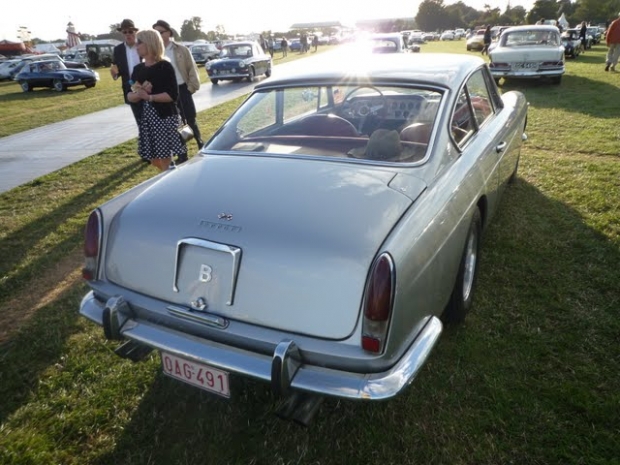
Like all 2+2 Ferraris the 250GTE has never been as prized as its two-seater brothers and today it would take a perfect concours-winning example to top £200,000. These relatively low prices have led to a significant number being converted into replicas of the 250SWB, GTO and Testa Rossa. This is a shame for a model that contributed so much financially to Ferrari's coffers and probably enabled development of cars like the GTO to be financed. One example also served as Enzo Ferrari's personal transport (possibly with a 400SA engine installed).
Ferrari 250GTO
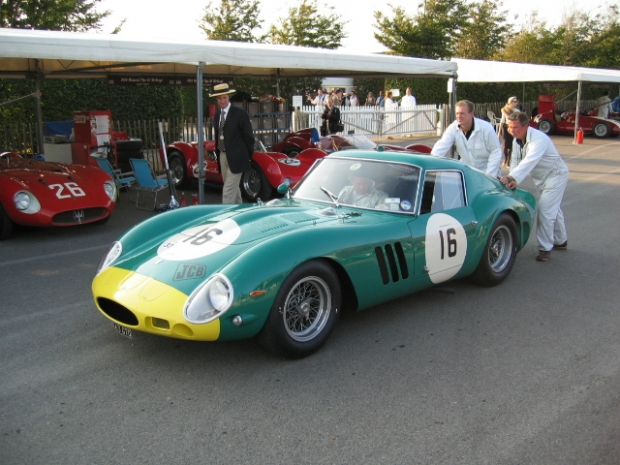
These features have concentrated on Ferrari's road cars thus far, but here the lines become a little blurred. While nominally a road car, the legendary 250GTO was little more than a race car with number plates.
Towards the end of 1961 Ferrari was concerned that the existing SWB would be outclassed in GT racing by the newly introduced Jaguar E-Type. Their solution was an alleged evolution of the SWB. I say alleged because although the CSI (the predecessor to the FIA) accepted it as such, there is little doubt that in reality this was an all-new car.
Initial development was carried out by Giotto Bizzarrini, but when he and many other Ferrari engineers resigned after a dispute at the end of 1961, final development was handed over to new chief engineer (and future Ferrari legend) Mauro Forghieri.
A new, more aerodynamic body style was developed in-house and made into metal by Scaglietti. Initial tests indicated that the stunning new shape suffered from lift at the rear, so a spoiler was added to the rear deck. Mechancially the Testa Rossa spec 3.0 litre 250 engine was used, mated to a five speed gearbox (which incidentally does not fit into the chassis of an SWB, proving that this car was more than just an evolution). With Le Mans gearing, the 250GTO could top 170mph. The only real concession to the car being an evolution of the SWB was the retention of the live rear axle secured by a Watts linkage, when Ferrari already had working double wishbone independent suspension on its sports prototypes.
From 1962 through to 1964 the GTO would dominate GT racing with class wins (and second place overall) at Le Mans in '62 and '63. It would also win the Tour De France for automobiles outright in 1963 and 1964.
By 1964 the competition was getting tougher and with CSI declaring the new 250LM a sports prototype and not a GT, a reworked version of the GTO, known as the 250GTO 64 (or sometimes the 250GTO series II), was introduced. Looking like a front-engined 250 LM, the 64 had a low-slung Pininfarina-designed body to aid aerodynamics. This was not enough to prevent the new Shelby Daytona Coupes capturing the GT class win at Le Mans, although a GTO 64 still won the GT class up to 3.0 litres. In total 36 250GTO's were made, although no two cars are exactly alike with many detail differences between each car.
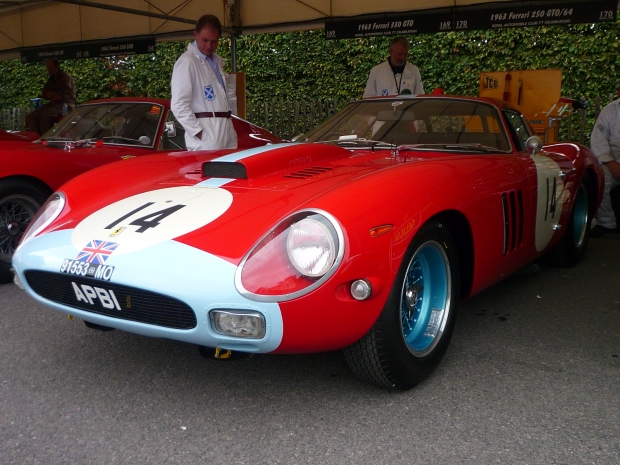
Today the GTO is undoubtably the most prized Ferrari of all and even examples with a weaker provenance can expect to make well in excess of $20m, with an example recently sold privately for $32M.
(For further reading and video of the 250GTO please see our feature where former owner Stephen Mitchell recounts what it was like to own one of these cars).
Ferrari 250 GTL 'Lusso'

With the GTO replacing the Competizione versions of the SWB, Ferrari needed a new car to replace the Lusso street versions. The replacement was the 250GTL, or Lusso as it is commonly (and confusingly when discussed alongside the SWB) called.
The 2.4m chassis and engine were the same as the outgoing SWB, but as with the GTE the engine was moved forward in the chassis, this time to give more legroom for the driver.
Styling was again by Pininfarina and is arguably one of the most beautiful Ferrari's of all. The sloping bonnet runs into a glasshouse that appears to be an evolved version of the that used on the 400SA. The tail is a truncated Kamm design with a small lip spoiler. The interior dashboard design is very unique with the speedometer and rev counter placed centrally whilst the ancillary gauges are placed in front of the driver. I suspect this is to aid visibility, but it does make for a very odd view for the driver.
The Lusso was claimed to be capable of 151mph with the optional larger gear ratios and 142mph on the standard set. As with the California the Lusso was popular with Hollywood film stars, with Steve McQueen being perhaps the most famous Lusso owner. In total 350 Lusso's were produced, and this model brought the long and illustrious line of Ferrari 250s to a close as it was replaced by the new 275GTB in 1964.
The Lusso's style has helped it to remain a desirable car throughout its history and today the best examples will sell for over $1m, with the McQueen-owned example selling for more than twice that figure.
Ferrari 500 Superfast
_620_426_s.jpg)
I must confess I should probably have included the 500 Superfast in the feature covering the 275 and 330 series cars as it has far more in common with the 330 series than any of the the other cars featured here.
Introduced in 1964, the 500 Superfast replaced the 400 Superamerica and featured an evolution of the Aerodinamico body style (no other body was offered). Chassis and drivetrain wise the 500 was almost identical to that of the 330GT 2+2 although the 500 was a two-seater design.
What really marked the Superfast out was its unique engine, a two cam V12 unit with a 5.0 litre capacity. To achieve this Ferrari revived the Lampredi long block design with its 108mm bore spacings but applied the detachable cylinder heads of the Colombo design to it. This hybrid of the two strands of Ferrari V12 engine design produced a true 400 bhp, and allowed the Superfast to live up to its name with a top speed of over 170mph.
Like the 400SA, this was a car for the super rich and in today's terms could probably be compared to Bugatti's Veyron rather than anything in the current Ferrari range. Only 36 were made, with first owners including the likes of the Shah of Iran and actor Peter Sellers. There was one evolution in it's short production run: later cars gained a five speed gearbox, in line with the upgrades of the 330GT.
Today, like all classic Ferraris, they are highly collectable but considering their rarity and position in the range when new, they are surprisingly worth less than their 250 contemporaries. The best examples hover around the $1m mark as and when they come up for auction. The Superfast's reputation for being mechanically temperamental, not to mention the difficulties in sourcing replacement parts for a car with an almost unique engine design, coupled with a reputation of not being particlulary fantastic to drive, have combined to keep prices down.
Conclusion
The most desirable car here is undoubtedly the 250GTO. It has everything: stunning looks and performance, backed up by a great competition history. If money is no object, it is the car to choose, but at $20m or more, for most people money certainly is an object! The 250SWB is a truly great car and more than worthy of a place in anyone's fantasy garage, but for me it is one of the less well-known cars in this feature that piques my interest.
For around a tenth of the price of a 250GTO, I find an early 2.4m wheelbase 400 Superamerica Aerodinamico a beguiling proposition. In that form it's actually rarer than a 250GTO, and would have been a much more exotic choice when new and in some ways remains so today. Perhaps not as conventionally beautiful as the GTO and SWB, the Aerodinamico is a highly individual shape that is going to attract attention wherever it goes. It also suits my preferences for Grand Touring cars - much better at blasting along French N roads than thinly disguised road racers.
Racing derivatives and other variations
As has already been noted, in the period from 1958 through to 1964 Ferrari moved to becoming a proper production company. That didn't stop a number of special-order cars being built. Ferrari also built a number of variations specifically for racing. Below are some of the more significant variations.
250 variations
The 400SA Aerodinamico body style was also applied to a number of special Ferrari 250s. Chassis 2821GT used the 2.6m wheelbase and the front resembled that of a 250PF Cabriolet whilst the rear was to the Full Aerodinamico style. Three 250SWBs 2429GT, 2613GT (built for Prince Bernhard of Holland), and 3615GT also received Aerodinamico bodies. Another 250SWB (2643GT) received a body which, while taking elements from the Aerodinamicos, was unique and served as a prototype for the GTO. Pininfarina also built a one-off coupe on the SWB(3469GT) chassis using a design that closely resembled the 400SA Cabriolet with the hardtop in place.
The only other Carrozeria sanctioned by Ferrari to work on the 250SWB chassis from new was Bertone, who built two cars (1739GT and3269GT) each with a different style.
The most famous 250SWB derivative was most certainly not sanctioned by Ferrari when new. The famous 250 Breadvan was built for Count Volpi's Scuderia Serenissima team to a design by ex-Ferrari employee Bizzarrrini. Count Volpi's order for a 250GTO was cancelled by Enzo Ferrari when he discovered Volpi was backing the new ATS F1 team, and the Breadvan was his response. The Breadvan is worthy of much greater discussion and will feature in a future Drive Cult article.
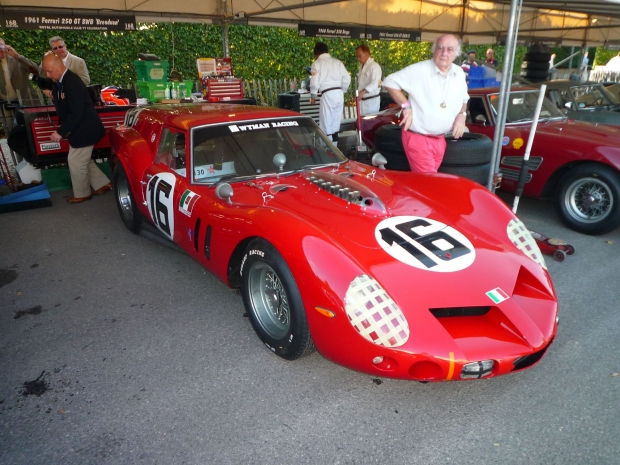
The Lusso shape seems to have been considered too good to alter. The only known variation was by Pininfarina itself which fitted a 400SA style nose to 4335GT. This car served as Battista Pininfarina's personal car for a time.
4.0 concept cars.
Through the production run of the 400SA Pininfarina showed a series of three concept cars known as Superfast II, III and IV. In fact, all were built using the same chassis: 2207SA. The first was effectively the prototype of the Aerodinamico body, while the second featured a larger glasshouse. The final version, IV, was similar to III but with a revised nose that previewed the four headlight design on the 330GT 2+2. The 2207SA car is currently being restored by its present owner to the Superfast III specification.
'330GTO'
_620_349_s.jpg)
In addition to the 36 250GTOs, Ferrari built a further two cars with the same body style but fitted with 4.0 engines and four speed gearboxes from the 400SA, which delivered 400bhp in full race trim. These are often referred to as 330GTOs but the official designation is somewhat vague. One example was entered at the 1962 Le Mans 24 Hours as a 330LM Experimental. One further 4.0 litre '330GTO' was built as a one-off road car featuring a 50mm extended wheelbase and the 250GTO's five speed gearbox. Drive Cult has already featured this car, chassis SN 4561SA, here.
330LMB
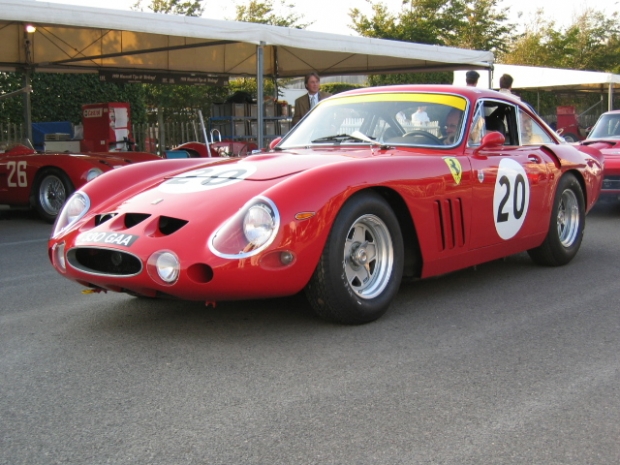
In 1963 Ferrari also built four Ferrari 330LMBs (Le Mans Berlinetta). Again, these featured the 400SA engine in a version of the 250 Lusso's body but with a nose design from the 250GTO. Despite boasting huge straightline speed (over 180mph at Le Mans) these were never particularly successful in period, although one example 4381SA has had considerable success in historic racing at events like the Goodwood Revival. One example of the 250GTO 4713GT also received this body style.
Photo credits
250SWB and 250 GTL 'Lusso' Mark Shannon.
All other photos by the author.
Book sources
Ferrari Legend: the road cars by Antoine Prunet
Ferrari 250 GTO by Anthony Pritchard
Original Ferrari V12 by Keith Bluemel




